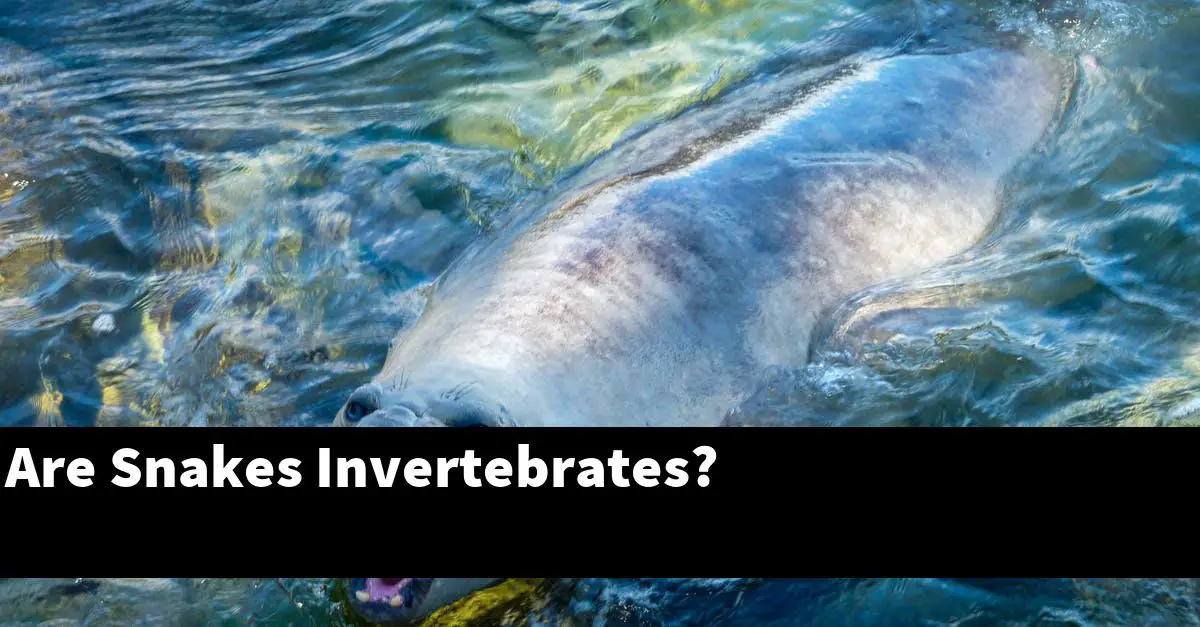The essay “Are snakes invertebrates?” discusses whether snakes are invertebrates. It cites evidence from both sides of the argument and ultimately concludes that snakes are not invertebrates.
Do snakes have bones?
Snake skeletons differ from those of other vertebrates in a number of ways. For example, snakes lack a vertebral column, and their ribs are not connected to their spine.
In snakes, the vertebral column and ribs are replaced by a series of vertebrae that are fused together. This fusion creates an S-shaped backbone.
The vertebrae are not attached to one another at the skull, so the skull can move freely.
The bones in a snake’s skeleton are made of a hard, dense material called cartilage. Cartilage is similar to the material that makes up our bones, but it is not as strong.
When a snake moves, its bones flex and stretch. This flexing and stretching causes the bones to break down and wear down.
Over time, the bones in a snake’s skeleton will gradually disappear, and the snake will be unable to move.
Do all invertebrates have spines?
Spines are common in invertebrates, but not all invertebrates have them. Some invertebrates, such as jellyfish, have no spines at all.
Spines are also not always a sign of a defensive posture. Spines can also be a sign of an aquatic animal that lives in water.
Is a snake invertebrate or vertebrate?
A snake is not a vertebrate because it lacks a backbone. Invertebrates are animals that lack a backbone.
Do snakes have backbones?
There is some dispute amongst biologists as to whether snakes actually have backbones. While there is some evidence to suggest that they do, there is also evidence to suggest that they do not.
The main argument in favour of snakes having backbones is that they possess a number of features that are not typically found in animals without backbones, such as the ability to twist their bodies around their long, slender spinal cord. However, it is possible that this is simply a result of the snakes’ flexible body structure, and that they do not actually have backbones.
Are all snakes vertebrates?
All snakes are vertebrates, meaning they have a backbone and a spinal cord. The vertebrae in a snake’s backbone are numbered from the base of the skull to the tail.
The first vertebra, or the sacrum, is at the base of the skull. The rest of the vertebrae are numbered from 1 to 12. The spinal cord runs along the length of the snake’s backbone.
What is the difference between invertebrates and reptiles?
There is a big difference between invertebrates and reptiles. Invertebrates are animals without a backbone, including worms, insects, and crustaceans.
Reptiles are animals with a backbone, including snakes, lizards, and turtles.
What makes a snake a vertebrate?
There are many things that make a snake a vertebrate, but the most important are the spinal cord and the skull. The spinal cord is a bundle of nerves that runs from the brain down to the lower parts of the body.
It allows snakes to move their bodies and their heads. The skull is a hard piece of bone that sits on top of the spinal cord, and it allows snakes to move their eyes and ears.
What animals are invertebrates?
Invertebrates are animals that lack a backbone. This includes everything from jellyfish to crabs to starfish.
Invertebrates can be found all over the world, from the lowest levels of the ocean to the highest mountains.
What is the meaning of invertebrates?
Invertebrates are all the animals that lack a backbone, including worms, spiders, and crustaceans. They make up a large and diverse group of animals, which includes everything from tiny single-celled organisms to towering creatures like elephants.
The word “invertebrate” comes from the Latin word “invertebra,” which means a joint in the spine.
Do snakes vertebrate?
Yes, snakes are vertebrates. This means that they have a spine, spinal cord, and brain.
Conclusion
Yes, snakes are invertebrates. They lack a backbone and have a flexible skeleton made up of many small bones.


